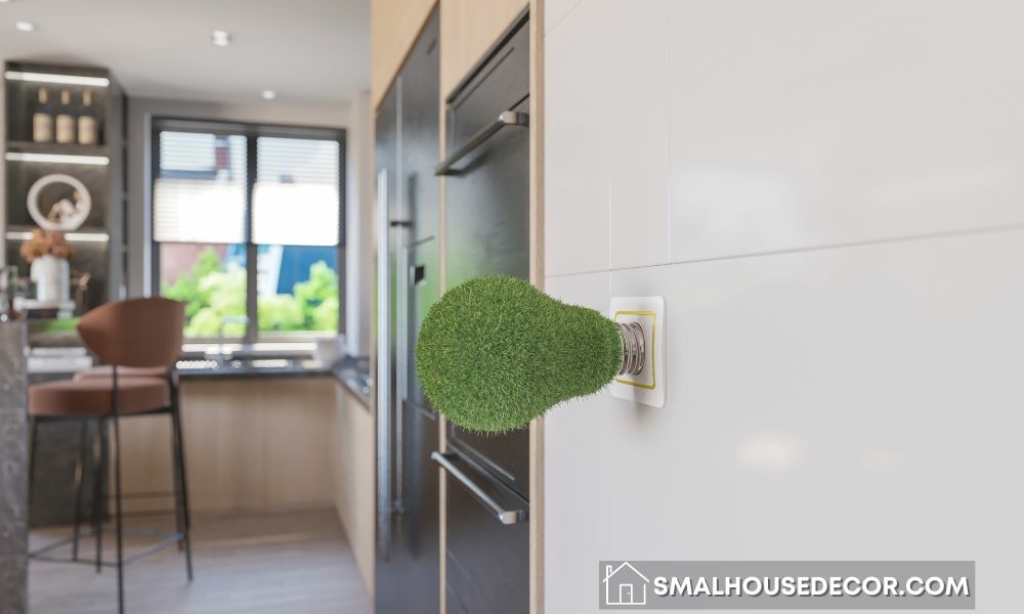Our world has become more focused on sustainability, and energy-efficient lighting plays a major role in this shift. This earth-friendly choice brings numerous perks for homeowners and the environment alike. So, let’s dive into the bright world of energy-efficient lighting, exploring its benefits and ways to light up your home while lessening its ecological impact.

Why Choose Energy-Efficient Lighting?
For years, we’ve relied on traditional incandescent light bulbs. However, they’re not the most efficient option. They use a large chunk of electricity and turn it into heat instead of light, which is neither practical nor cost-effective. In contrast, energy-efficient lighting comes to the rescue as a greener, more wallet-friendly solution.
Exploring Energy-Efficient Lighting Varieties
Nowadays, lighting stores offer a range of energy-efficient options for homeowners to consider. These include Compact Fluorescent Lamps (CFLs), Light Emitting Diodes (LEDs), and Halogen Incandescent Bulbs. By opting for CFLs, energy usage can be reduced by 75% compared to standard incandescent bulbs, while also providing longer-lasting illumination. However, it is important to note that CFLs contain a small amount of mercury, necessitating proper disposal. LEDs have gained popularity due to their outstanding efficiency – using up to 80% less energy than conventional bulbs and offering extended longevity. On the other hand, Halogen Incandescent Bulbs present an improved version of traditional incandescents that still conform to energy efficiency requirements while preserving their familiar appearance and light quality.
Advantages of Energy-Efficient Lighting
The main advantage of energy-efficient lighting is its substantial reduction in energy consumption, resulting in lower electricity bills and a smaller carbon footprint. In addition, these bulbs, particularly LEDs, have an extended lifespan compared to traditional ones, leading to fewer replacements and decreased waste. Energy-efficient bulbs also offer superior light quality, with a consistent output and options for various color temperatures and dimmability.
Moreover, they emit less heat, which enhances safety by minimizing the risk of burns or fires due to overheating. Lastly, utilizing energy-efficient lighting promotes environmental benefits by decreasing greenhouse gas emissions, combating climate change, conserving resources, and reducing the necessity for bulb production.
Also Read: 5 Energy-Efficient and Eco-Friendly Home Upgrades to Stand Out Among Resellers
The Energy Star Label
When shopping for energy-efficient lighting, look for the Energy Star label. Energy Star is a certification program that identifies products meeting strict energy efficiency guidelines set by the U.S. Environmental Protection Agency (EPA). Energy Star-certified bulbs are thoroughly tested and proven to be energy-efficient and of high quality.
Determining Savings Through Energy-Efficient Illumination
The significant monetary advantages of energy-efficient lighting can be determined by taking into account a few elements, such as contrasting the wattage of the energy-saving bulb with that of the traditional incandescent bulb it replaces, approximating the number of hours per day the light bulb operates, and identifying the electricity cost per kilowatt-hour (kWh) in your region, which is available on your utility bill. By multiplying the saved wattage by usage hours and electricity rates, you can determine each bulb’s yearly savings, highlighting the long-lasting financial rewards of choosing energy-efficient lighting.
Adopting Energy-Efficient Illumination
Adopting energy-efficient lighting can be accomplished effortlessly through a few straightforward steps: initially, evaluate the kinds of bulbs in your home by observing their wattage and placement; afterward, purchase energy-saving bulbs that match the wattage and style of the bulbs you are changing, making sure to select the appropriate color temperature and luminosity for every room; subsequently, set up the new energy-efficient bulbs following manufacturer instructions and safety measures; lastly, dispose of older incandescent and CFL bulbs correctly—numerous hardware stores and recycling facilities accept these for recycling, especially CFLs containing a minimal quantity of mercury.
Energy-saving lighting is a sensible and environmentally-friendly option for homeowners. By decreasing energy usage, cutting down electricity costs, and preserving valuable resources, it not only benefits your finances but also promotes a greener future for our planet. Multiple energy-efficient alternatives like LEDs and CFLs make transitioning to eco-friendly lighting in your home simple. As you switch to energy-efficient illumination, you’ll experience enhanced lighting quality while taking a crucial step toward adopting a more sustainable and energy-aware way of living.